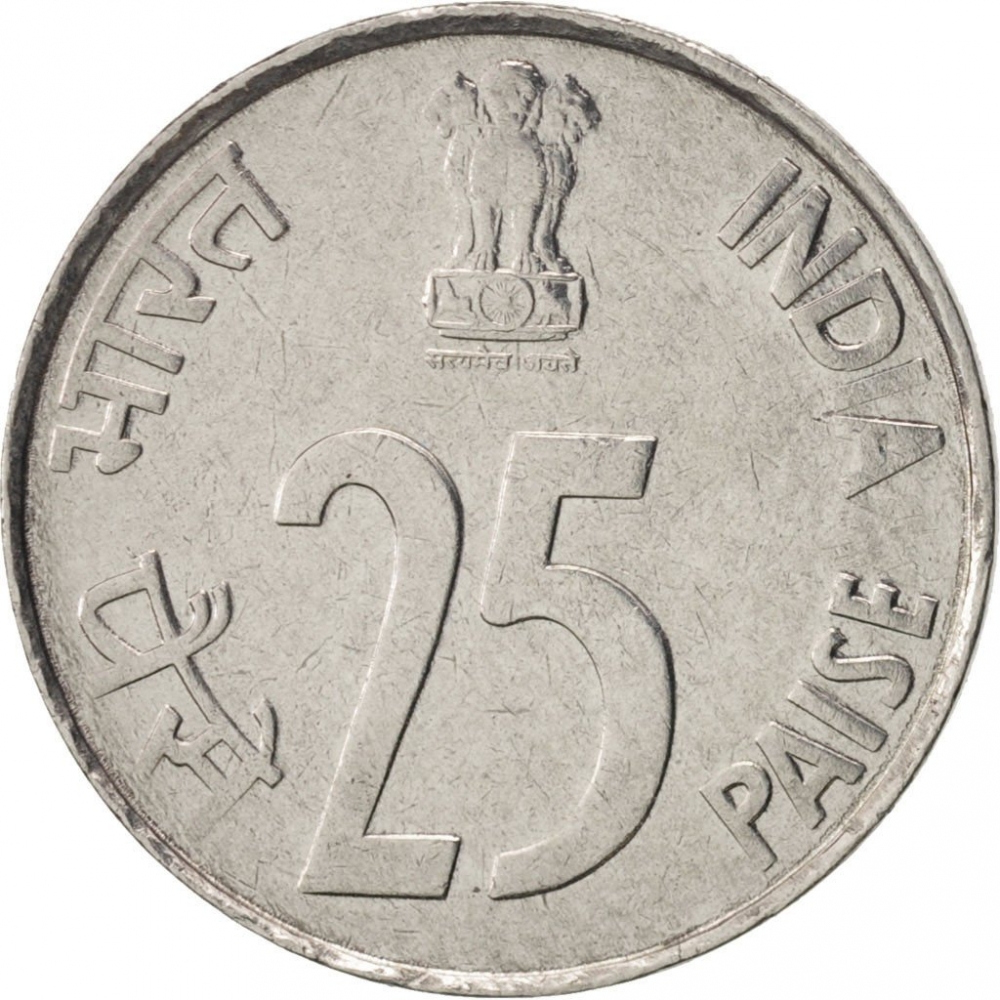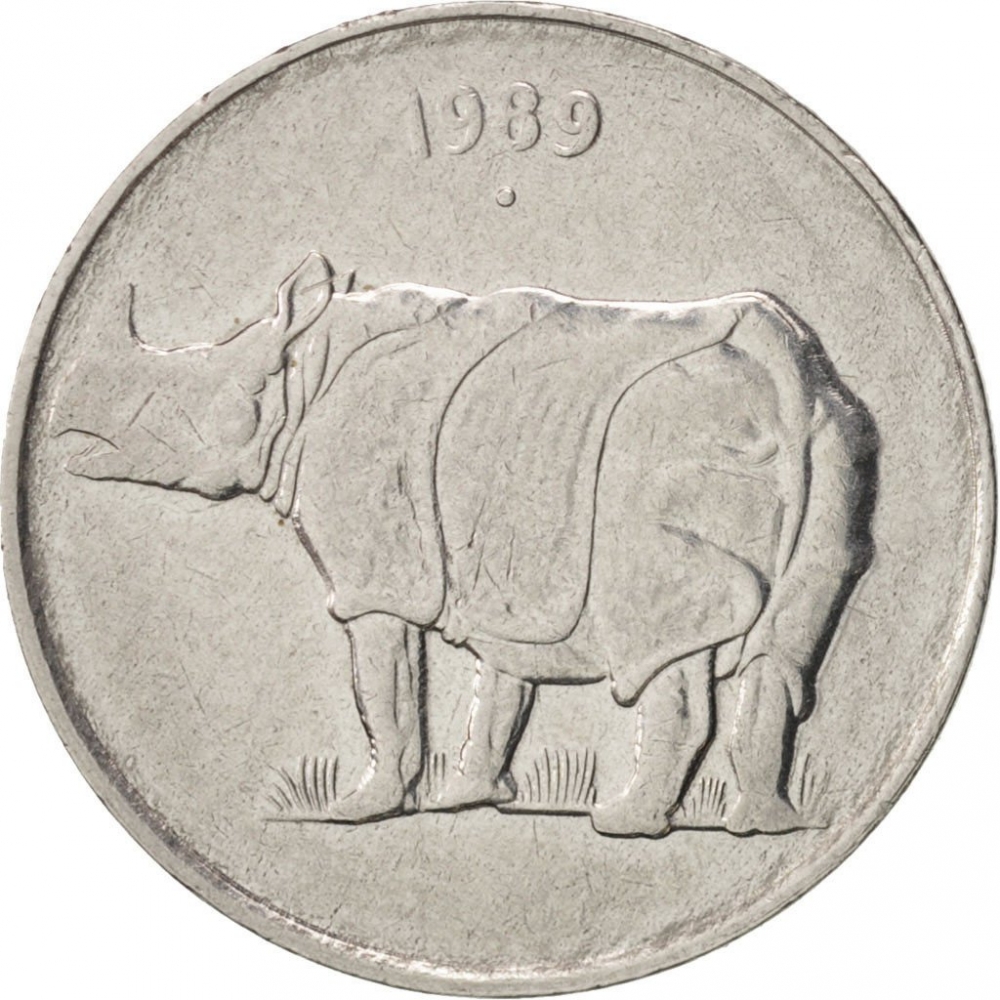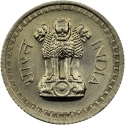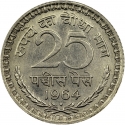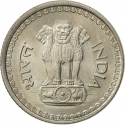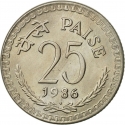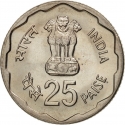You are about to finish your registration. Please check your mailbox (including spam folder). There should be a letter with a confirmation link. Check setting to make sure that your e-mail address is correct.
Send letter again
Obverse

|
Depicts the State Emblem of India with Satyameva Jayate below surrounded by the country name and value. भारत INDIA |
|---|---|
Reverse

|
Indian rhinoceros facing left. Date and mintmark (if any) above. 1989 |
| Edge |
25 Paise
KM# 54
Characteristics
| Material | Stainless Steel |
| Weight | 2.83 g |
| Diameter | 19 mm |
| Thickness | 1.55 mm |
| Shape |
|
| Alignment | Medal |
| Mints |
Calcutta Mint (no mintmark) Hyderabad Mint (★) Mumbai Mint (♦) Noida Mint (●) Ottawa Mint
|
